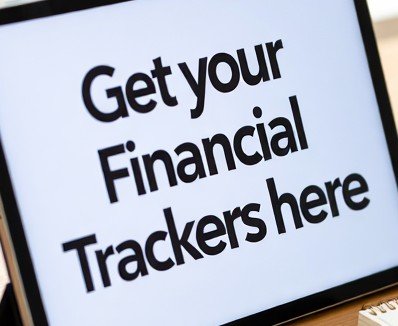
Living on an irregular income? Whether you’re a freelancer, solopreneur, creator, or side hustler, you’ve likely felt the rollercoaster of feast and famine. One month, your bank account is thriving. The next, you’re scraping by. But unpredictable income doesn’t have to mean unpredictable finances.
This guide shows you how to manage irregular income with smart, visual budgeting systems that help you feel financially stable—even when your paychecks fluctuate.
💡 Step 1: Know Your Bare Minimum (AKA Your Survival Budget)
Before anything else, you need to know what it takes to keep your life running.
🔹 Calculate Your Essential Monthly Expenses:
These are your non-negotiables—what you must pay no matter what:
- Rent or mortgage
- Utilities (electric, water, gas, internet)
- Groceries and basic household supplies
- Insurance (health, auto, home)
- Minimum debt payments (credit cards, student loans)
- Basic transportation (gas, transit, maintenance)
🎯 Your “Bare Minimum Budget” = Your financial foundation.
It’s the number you must cover to avoid falling behind. You’ll use this baseline to shape your buffer system, emergency planning, and spending priorities.
💰 Step 2: Use the “Hill & Valley” Income Strategy
Freelancers don’t get steady paychecks. That’s why you need to smooth the ride.
Here’s how it works:
🟢 In high-income months (hills):
Put the extra money aside instead of increasing spending.
🔴 In low-income months (valleys):
Use those savings to cover your basic needs.
💡 Create an “Income Buffer” Account:
Think of it like a personal reserve tank.
🏦 Open a separate savings account just for income overflow.
- ✅ Transfer your surplus income here during flush months.
- ✅ Withdraw from this account when income dips.
This creates paycheck consistency—even when client work or sales vary.
🧠 Pro Tip: Aim to build 1–2 months of baseline expenses in this buffer.
📂 Step 3: Budget Based on What You Have, Not What You Hope For
Ditch the guesswork. Instead, let your actual income lead the way.
Build a Prioritized (Tiered) Budget:
Sort your expenses into 3 levels of importance so you know exactly where each dollar should go:
- Tier 1: Must-Haves
- Rent/mortgage
- Utilities
- Food
- Insurance
- Minimum debt payments
- Tier 2: Nice-to-Haves
- Subscriptions
- Phone upgrade fund
- Gym or coworking memberships
- Tier 3: Extras & Goals
- Dining out
- Fun money
- Travel fund
- Business upgrades
- Savings & investments
📋 As income comes in, fund Tier 1 first, then move to Tier 2, and only fund Tier 3 when you’ve covered the rest.
Why it works:
- You’ll never overspend out of optimism.
- You’ll always meet your basic needs.
- You stay in control, no matter your income level.
📆 Step 4: Pay Yourself a Consistent “Salary”
One of the best moves for anyone with inconsistent income? Create fake consistency.
Here’s how:
- Calculate your average income over the past 3–6 months.
- Add up your actual earnings.
- Divide by the number of months.
- Choose a safe monthly “paycheck” to send yourself.
- Make it a little less than your average, to leave room for savings.
- Each month, transfer that amount from your business account (or income buffer) to your personal checking.
📤 This is your “salary”—even if you earn more or less in a given month.
🎯 Why this works:
- You create stability in your personal budget.
- You avoid lifestyle creep when income is high.
- You protect your business cash flow and savings.
🛠 Step 5: Use Tools That Work With Irregular Income (Not Against It)
Budgeting doesn’t have to be complicated or time-consuming. Use tools that make variable income easier to track and manage.
✅ Top Tools for Freelancers & Variable Earners:
- YNAB (You Need A Budget)
- Specifically built for irregular income.
- Helps you assign every dollar a job and prioritize needs.
- Tiller Money
- Links directly to your bank accounts.
- Automatically updates spreadsheets.
- Great for Excel/Google Sheets lovers.
- Custom Budgeting Spreadsheet
- Total control over categories.
- Adaptable to your business and lifestyle.
- One-time setup, unlimited customization.
🔗 Want a ready-to-go budgeting spreadsheet? [Grab it here!]
🧠 Bonus: Mindset Tips to Stay Sane with Irregular Income
Budgeting with variable pay isn’t just a math game—it’s a mindset shift.
Here’s how to stay calm and confident through the highs and lows:
✍️ Review & Adjust Regularly
- Revisit your budget every month (or week).
- Update your income, buffer, and priorities.
🧾 Track Actual Income Trends
- Keep a log of what you really earn.
- Spot patterns to better predict the future.
💭 Be Flexible & Forgiving
- Your income doesn’t define your discipline.
- Adjust quickly, but judge yourself never.
🔄 Stay Agile, Not Anxious
- If you overspend, course-correct.
- If a slow month hits, lean on your system.
📌 Summary: The Freelancer’s Budgeting Checklist
✅ Calculate your bare minimum monthly expenses
✅ Set up a hill & valley system with an income buffer
✅ Budget only with money you have, not estimates
✅ Prioritize expenses in tiered categories
✅ Pay yourself a predictable salary each month
✅ Use budgeting tools designed for flexibility
✅ Revisit, adjust, and track income regularly
✅ Stay patient, consistent, and kind to yourself
🎁 Want to Start Budgeting Smarter?
👉 Grab the Irregular Income Budgeting Template — built for freelancers, creatives, and anyone tired of financial whiplash.


